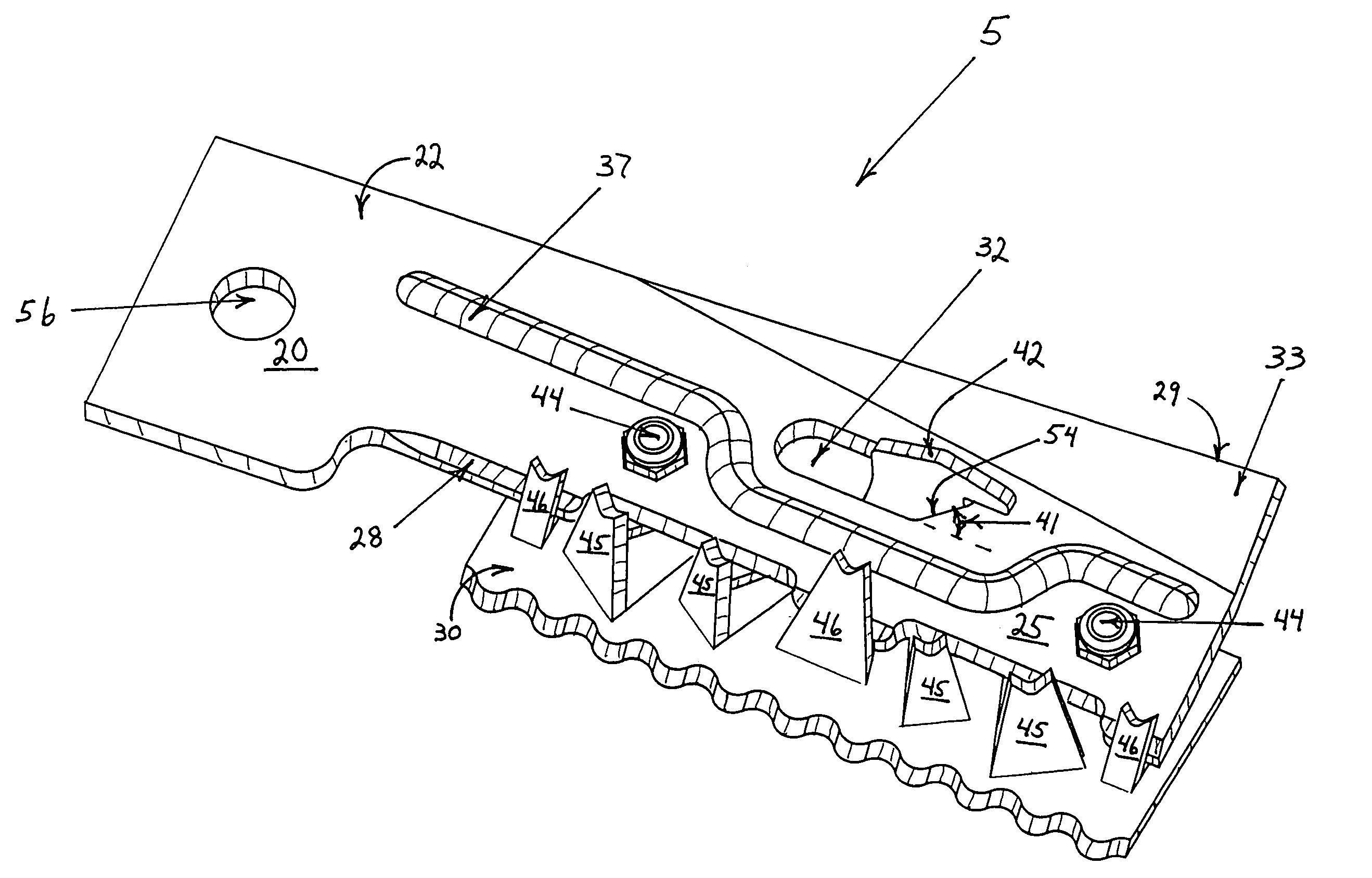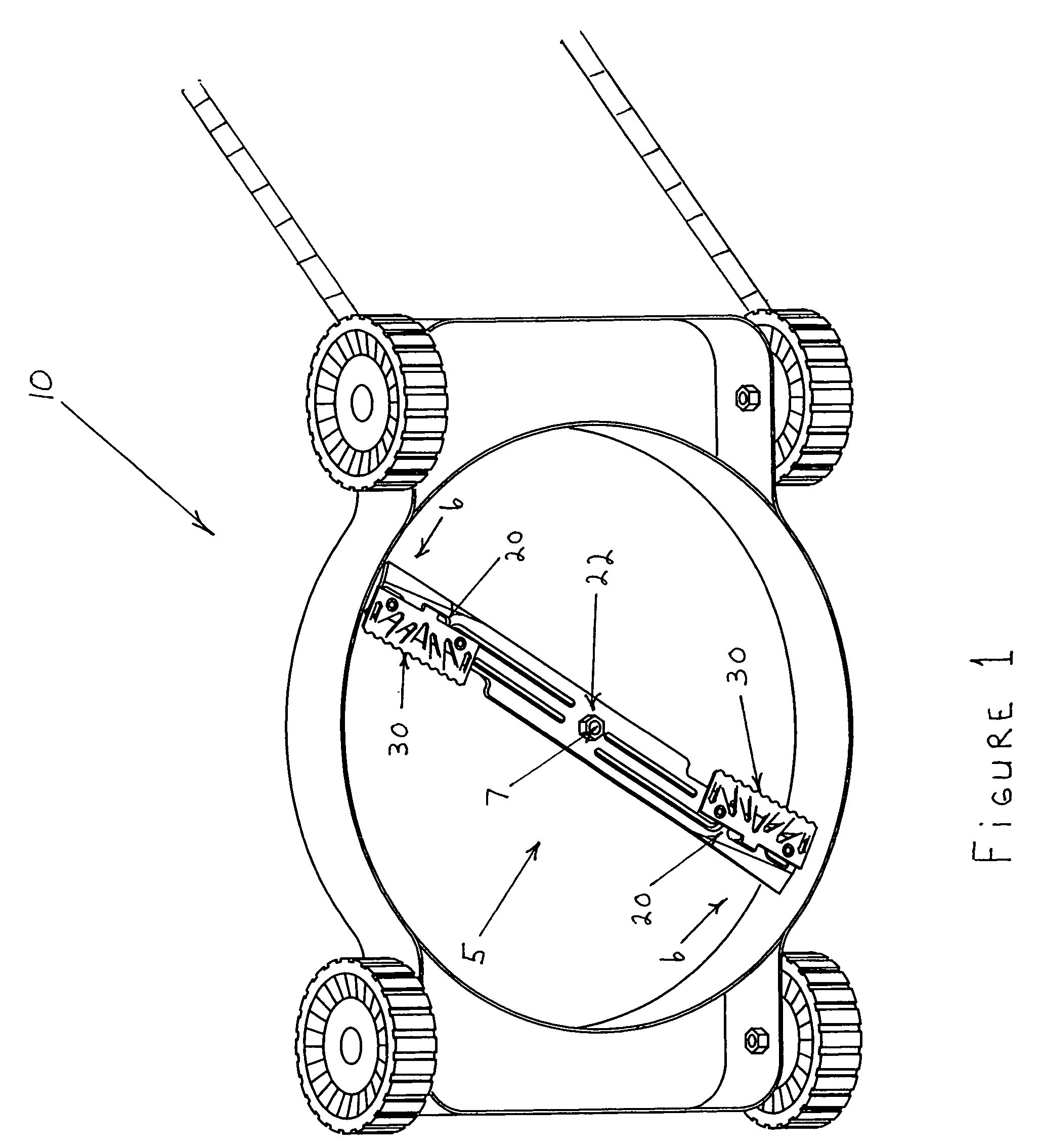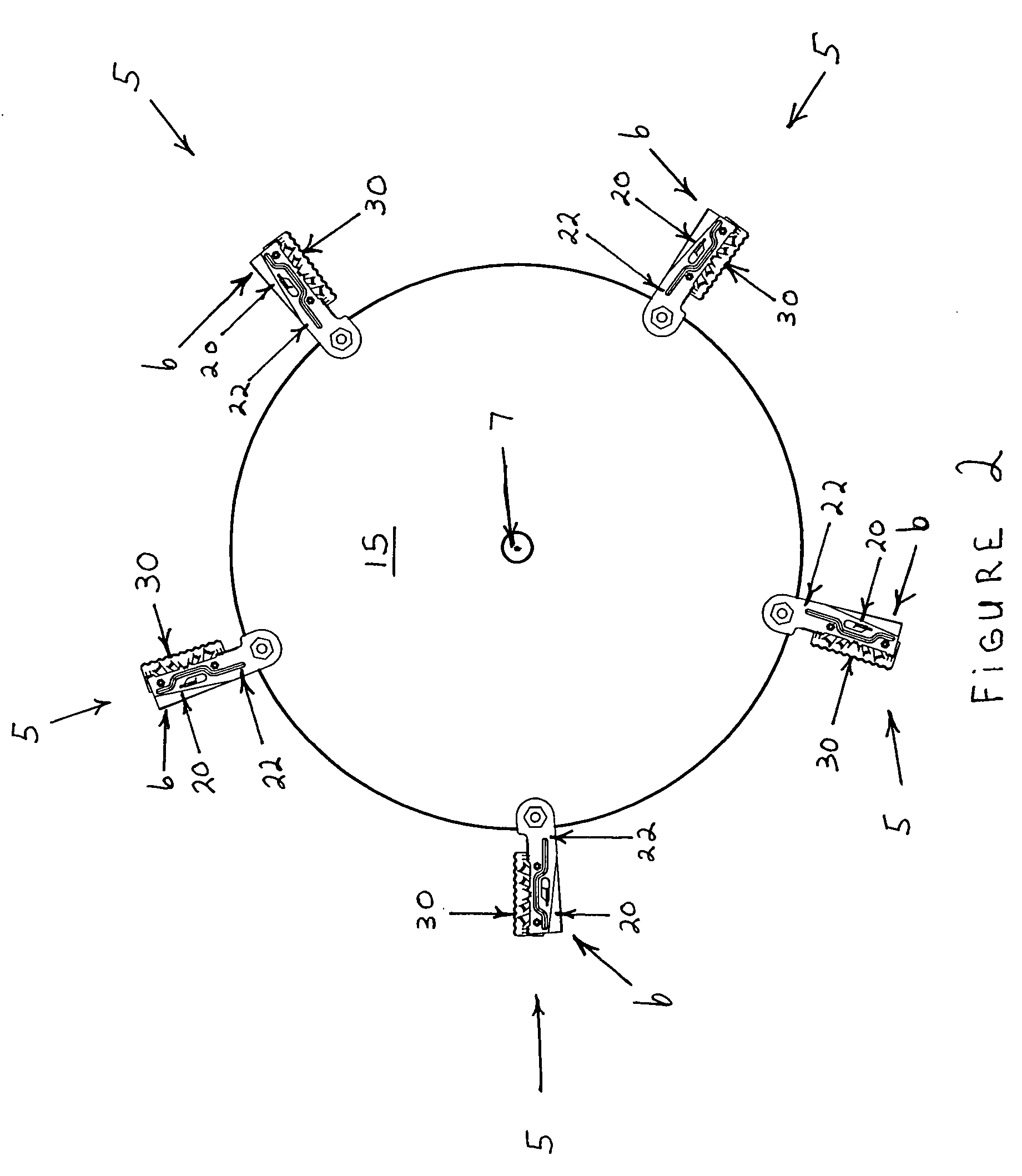Blade for rotary cutting machine
a cutting machine and blade technology, applied in the field of blades for rotary cutting machines, can solve the problems of unsightly brown edges, inconvenient maintenance of cutting edges in rotary cutting machines, and inability to meet the needs of maintenance, so as to minimize any flexing, enhance vegetation growth, and improve performance
- Summary
- Abstract
- Description
- Claims
- Application Information
AI Technical Summary
Benefits of technology
Problems solved by technology
Method used
Image
Examples
Embodiment Construction
[0043] Referring now to the drawings wherein like reference numerals have been used throughout to designate like parts among the several views. Referring to FIG. 1 which shows a perspective view of the bottom of a rotary cutting machine 10 having a blade assembly 5 with an insert holder 20 located at each blade end 6 of elongated blade 22 each with a replaceable insert 30 that rotates about a central axis 7. In FIG. 2, blade platform 15 is shown with multiple blade assemblies 5, each having an elongated blade 22 with a single insert holder 20 and a replaceable insert 30 located at only one blade end 6 spaced around the circumference of blade platform 15 configured to rotate about central axis 7.
[0044]FIG. 3 is a perspective view of insert holder 20 prior to the installation of replaceable inserts 30 (not shown). Insert holder 20 consists of an elongated blade 22 that rotates about central axis 7. Longitudinal axis 24 extends beyond the length of insert holder 20 to define relative ...
PUM
 Login to View More
Login to View More Abstract
Description
Claims
Application Information
 Login to View More
Login to View More - R&D
- Intellectual Property
- Life Sciences
- Materials
- Tech Scout
- Unparalleled Data Quality
- Higher Quality Content
- 60% Fewer Hallucinations
Browse by: Latest US Patents, China's latest patents, Technical Efficacy Thesaurus, Application Domain, Technology Topic, Popular Technical Reports.
© 2025 PatSnap. All rights reserved.Legal|Privacy policy|Modern Slavery Act Transparency Statement|Sitemap|About US| Contact US: help@patsnap.com



